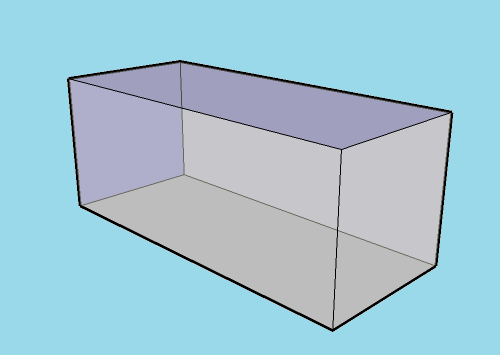You will need
- Calculator.
Instruction
1
Pre-need to make a reservation. Length, width and height are the parameters, which are sufficient to calculate the volume only of a rectangular parallelepiped. Under a rectangular parallelepiped means a figure in which all faces are formed by rectangles, which form between them angles. This means that in a rectangular parallelepiped opposite faces equal and parallel.
2
Now, having dealt with, in which case you can apply as input parameters of a parallelepiped, it is possible to proceed to the calculation of its volume. Volume is a measure describing the number occupied by the space object. To calculate the volume of a parallelepiped must be multiplied with each other all of its parameters: length, width and height. The formula can be expressed as:
V = a*b*c where a, b and C are parameters.
V = a*b*c where a, b and C are parameters.
3
For greater clarity, you can see an example:
There is a rectangular parallelepiped, the square base is equal to 42 cm2 and its height is 15 cm, it is required to find the volume of the original figure.
To solve the problem it should be noted that all of the parameters are known is only height. But given the footprint, which is found by multiplying together the length and width of the rectangle. From the above formula we can conclude that the area of the base is a*b cm2, then the volume of a cuboid are:
42*15 = 630 cm3
Answer: the volume of the figure is 630 cm3
There is a rectangular parallelepiped, the square base is equal to 42 cm2 and its height is 15 cm, it is required to find the volume of the original figure.
To solve the problem it should be noted that all of the parameters are known is only height. But given the footprint, which is found by multiplying together the length and width of the rectangle. From the above formula we can conclude that the area of the base is a*b cm2, then the volume of a cuboid are:
42*15 = 630 cm3
Answer: the volume of the figure is 630 cm3
Note
In a broad interpretation, a parallelepiped is a prism whose base is a parallelogram. There are several varieties of this shape, among which, in addition to rectangular parallelepiped, are:
- Straight parallelepiped whose lateral faces are rectangles;
Oblique parallelepiped, in which the lateral faces are not perpendicular to the base;
- A cube is a special kind of this type of figures, because all facets of it are squares. At the intersection they form right angles, and opposite faces are parallel to each other, which means that the cube is a special case of a rectangular parallelepiped
- Straight parallelepiped whose lateral faces are rectangles;
Oblique parallelepiped, in which the lateral faces are not perpendicular to the base;
- A cube is a special kind of this type of figures, because all facets of it are squares. At the intersection they form right angles, and opposite faces are parallel to each other, which means that the cube is a special case of a rectangular parallelepiped
